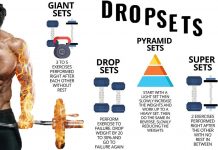💪 Correct Bench Press Technique & Form👈

The bench press is one of the first exercises that most guys learn when they begin strength training and is hands down the most popular lift performed in most gyms. Have you ever been to the gym on a Monday and tried to get on the bench? Not happening.
[wp_ad_camp_4]
🔥 The problem is: I rarely see it performed correctly.
The barbell bench press is done as an upper body lift, which targets the pectoralis muscles, but when it is performed correctly, becomes a whole body lift that teaches leg drive, total-body tension, and stabilizes the shoulder girdle. However, when performed incorrectly, it can cause serious muscle imbalances that lead to chronic shoulder pain. Needless to say this will hinder most daily activity.
In this article you will learn how to bench press with good technique to ensure safety and that you are getting the most possible benefit from this awesome lift. I will cover everything from the proper setup, to the complete execution, to various positions to suit your needs.
🔥 Getting Under the Bar
As with any lift, proper starting position is imperative in performing the exercise correctly and the bench press is no different. When you lie on the bench, make sure your butt, upper back, and head are all in good contact with the pad. Line up your eyes with the bar and make sure your neck is positioned neutrally to prevent injury.
[wp_ad_camp_5]
🔥 Hand Position and Gripping the Bar
Just like foot position, your grip position is highly individual and depends on various factors such as your individual anatomy, injury history, shoulder/wrist mobility and goals.
I recommend most people take a moderate or neutral bench grip for general fitness. The wider grip is generally used by powerlifters in competitions, but I find that for most people this grip chews up the shoulder a bit more.
Wherever you choose to grip the bar, you also want to make sure that your wrists are in a neutral position rather than hyperextended back, as this places great stress on your wrist. You can also lift more and produce more power by utilizing this positioning.
It is also very important to keep the bar as close and tight to the thumb/pad of your hand as possible. This will make it much easier to keep your wrist from hyperextending as well. The knuckles of your other 4 fingers should be behind the bar, not under it.




















































